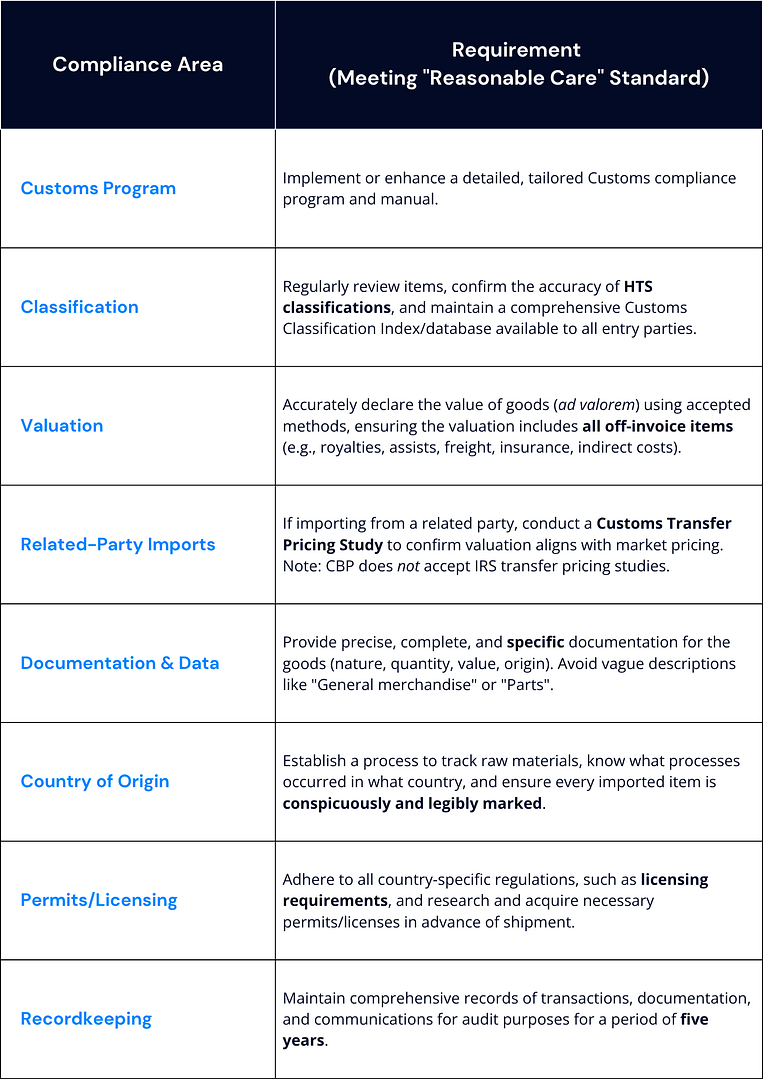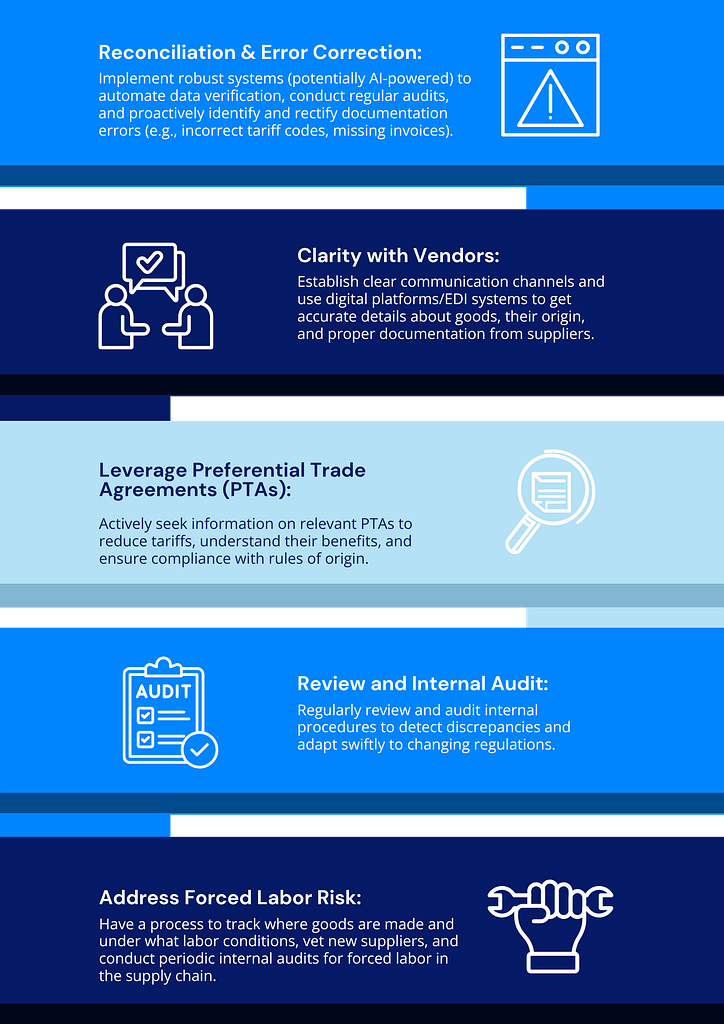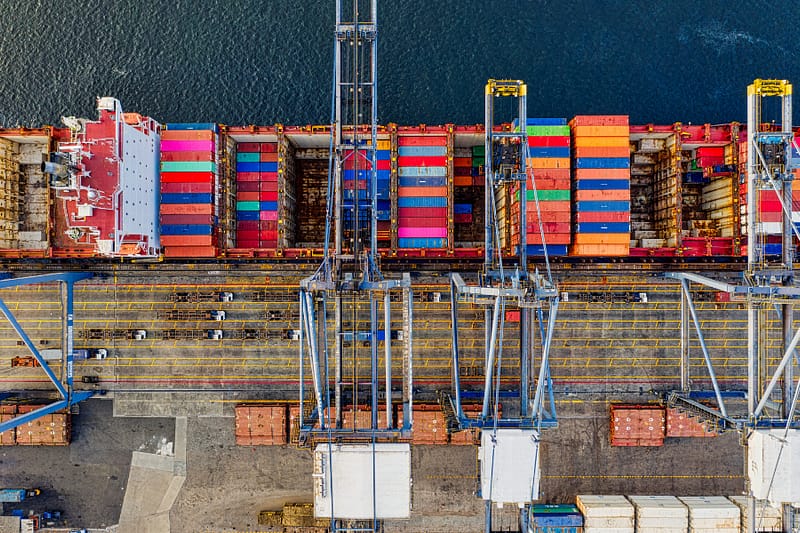Objectives, Requirements, and Approach.
The Changing Landscape of Customs Enforcement
“Reasonable care” and “shared responsibility” are no longer optional—they’re essential.
In today’s high-stakes trade environment, defined by record tariffs, advanced government detection tools, and strict penalties, robust customs compliance is critical.
The Customs Modernization Act of 1993 (Mod Act) shifted import responsibility to importers themselves, introducing the concept of reasonable care and the model of shared responsibility between importers and Customs and Border Protection (CBP).
Key takeaway: Effective compliance depends on cultivating a culture of diligence, transparency, and accountability.
Core Objectives of Customs Compliance
Transforming compliance from a box-checking exercise into a strategic advantage requires focus in these five areas:
1. Mitigate Enforcement Risks
Protect the company from unprecedented enforcement risks, financial exposure, and potential criminal liability for executives. The costs of compliance pale in comparison to the potential financial and reputational damage from violations.
2. Ensure Legal Adherence & Smooth Operations
Adhere strictly to all regulations and requirements set forth by customs authorities. This prevents legal liabilities, fines, operational disruptions, shipment delays, and even the seizure of goods.
3. Establish “Reasonable Care”
Meet CBP’s expectations by regularly reviewing and applying standards outlined in their Informed Compliance Publications. Their “Reasonable Care” guide is a must-read for every importer.
4. Enhance Trust and Credibility
Foster trust and credibility with stakeholders by demonstrating a commitment to ethical practices and responsible governance.
5. Promote Accountability and Transparency
Foster an internal culture that values accurate data, proactive risk management, and informed decision-making across departments.
Fundamental Requirements for Compliance
Customs compliance in the clearance process involves adhering to all regulations and requirements when importing or exporting goods, ensuring accurate documentation and payment of duties.

Proactive Compliance Approach
Building a culture of compliance means adapting continuously—every process, every shipment, every time.
Here’s how importers can stay ahead:
1. Implement or Strengthen a Customs Compliance Program
Develop a manual tailored to your company’s products, risk areas, and import origins.
2. Conduct a Classification and Valuation Review
Regularly validate HTS classifications and ensure valuation includes all off-invoice costs.
3. Confirm a Customs Transfer Pricing Study
For related-party imports, confirm valuation aligns with CBP—not just IRS—requirements.
4. Review Antidumping & Countervailing Duties (AD/CVD)
Identify all AD/CVD orders relevant to your products and confirm accurate country of origin.
5. Evaluate Free Trade Agreement (FTA) Claims
Verify that all FTA and duty preference program claims are accurate and fully documented.
Furthermore, importers should integrate these strategies for smoother clearance:

In summary, building a robust customs compliance culture is no longer optional but a critical business imperative driven by heightened enforcement and severe penalties. This transition requires companies to move beyond traditional methods and adopt a proactive approach based on the principle of “reasonable care”. The path to achieving this involves implementing a detailed compliance program; regularly reviewing HTS classification and product valuation (especially for related-party transactions); and integrating continuous strategies like reconciliation, error correction, and robust record-keeping. Ultimately, prioritizing and investing in custom compliance safeguards the business against legal repercussions, strengthens its reputation, and ensures seamless, lawful international trade operations.
Written By:
John L., Director of Global Strategy, OpenRoad Global, Inc.
